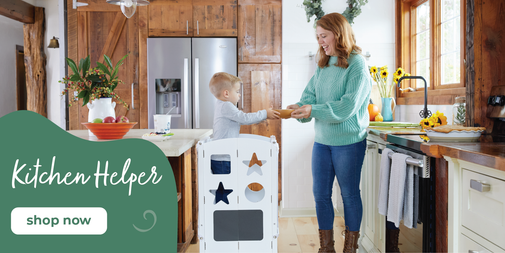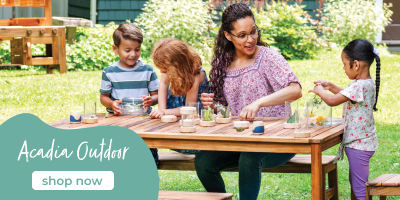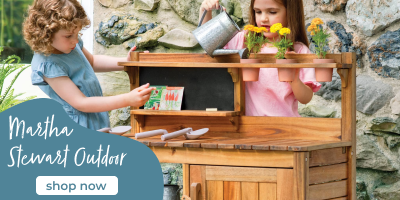Montessori vs Reggio : quelle est la meilleure façon d'aménager votre espace ?
Les philosophies Montessori et Reggio gagnent en popularité auprès du grand public et vous vous demandez peut-être comment les intégrer à votre maison ou à votre classe. Qu'est-ce qui distingue la méthode Montessori de l'approche Reggio et comment pouvez-vous vous inspirer de chacune d'elles pour créer un environnement d'apprentissage ou de jeu engageant adapté aux besoins de votre enfant ?
Les philosophies Montessori et Reggio offrent toutes deux des avantages précieux pour l'éducation de la petite enfance et au-delà. Comprendre les éléments clés de chacune d'elles peut vous aider à déterminer ce qui conviendra le mieux aux enfants dont vous avez la charge. À la maison, il n'est pas nécessaire de s'engager pleinement dans une seule philosophie. Au lieu de cela, n'hésitez pas à combiner les aspects des deux approches pour mieux répondre aux besoins uniques de vos enfants.


Qu'est-ce que la méthode Montessori ?
La méthode Montessori est une approche pédagogique développée il y a plus d'un siècle par le Dr Maria Montessori.
Au cœur de la méthode Montessori se trouve l'« environnement préparé », un espace soigneusement conçu où les enfants peuvent travailler de manière autonome. Dans les classes Montessori, l'adulte prépare du matériel et des activités adaptés aux besoins de développement et les enfants choisissent parmi ces matériels de manière autonome.
Le Dr Montessori a développé de nombreux matériels pour faciliter l'apprentissage des enfants de la naissance à l'adolescence. Mais il est important de noter qu'elle n'a pas conçu de jouets pour enfants. Il n'existe pas de « jouet Montessori », mais il existe des moyens de sélectionner et de présenter des jouets et du matériel qui s'alignent sur les principes Montessori.
Aménager votre espace d’inspiration Montessori est assez simple, et vous pouvez probablement le faire avec du matériel que vous possédez déjà en ajustant la façon dont vous le présentez.
Suivez ces conseils pour présenter les jouets d’une manière inspirée de Montessori :
1. Organisez les jouets et le matériel sur une étagère ouverte
L' étagère Montessori est un aspect important de la philosophie car elle offre un espace organisé et accessible où l'enfant peut accéder de manière autonome au matériel. L'étagère doit être pleine, mais pas encombrée, ce qui permet à l'enfant de trouver et de retirer facilement le matériel qu'il souhaite utiliser.
2. Se concentrer sur des matières fermées avec contrôle des erreurs
Les jouets ou matériels fermés sont conçus avec un objectif ou un résultat spécifique, comme les puzzles ou les jeux de tri. Vous pouvez rendre une activité plus fermée en ajoutant un objectif visuel, comme des cartes de motifs pour le perlage ou des cartes de construction pour un jeu de construction ouvert.
Le « contrôle des erreurs » aide les enfants à s'autocorriger sans intervention d'un adulte. Par exemple, les pièces d'un puzzle ne s'assemblent que si elles sont correctement placées. Vous pouvez ajouter un contrôle des erreurs à d'autres activités en utilisant des points de couleur au dos des cartes pour trier ou en fournissant des comparaisons visuelles (comme une photographie) pour le travail terminé.
3. Présentez les activités non réalisées avec tout le matériel nécessaire réuni
Une pile d'anneaux ou un puzzle terminé peut être joli sur une étagère, mais il est moins attrayant pour l'enfant. Au lieu de cela, organisez les activités non terminées avec du matériel disposé sur un plateau, en laissant de l'espace pour que chaque élément soit visible. Cette disposition favorise l'ordre et l'organisation, aidant les enfants à se concentrer sur la tâche plutôt que de rassembler le matériel manquant ou de vider le plateau pour trouver des pièces cachées.
Quelle est l’approche Reggio Emilia ?
L’approche Reggio Emilia, développée en Italie dans les années 1940, met l’accent sur l’exploration et la créativité ouvertes. Dans les environnements Reggio, les adultes fournissent une variété de matériels et d’outils ouverts, ainsi que des provocations – des configurations invitantes qui guident l’apprentissage et le jeu. Les enfants sont invités à explorer, interagir et expérimenter en utilisant ces matériaux à leur manière. Les éducateurs de Reggio répondent activement aux intérêts et aux passions de leurs élèves en adaptant l’environnement et en élaborant des provocations qui suscitent et défient leurs intérêts en évolution.
Vous pouvez créer un espace d’apprentissage ou de jeu inspiré de Reggio en faisant des choix réfléchis sur la façon dont vous présentez le matériel.
Voici quelques conseils pour présenter des jouets et du matériel d'une manière inspirée de Reggio :
1. Utilisez des étagères et des conteneurs ouverts pour exposer joliment les matériaux
Il est essentiel de veiller à ce que le matériel soit visible et accessible pour faciliter l'apprentissage ouvert par le jeu. Lorsque les enfants peuvent voir tout le matériel et les outils à leur disposition, ils peuvent mieux planifier et réaliser leur travail. La philosophie Reggio met l'accent sur la création d'environnements à la fois beaux et fonctionnels, améliorant la capacité des enfants à s'engager et à explorer.
2. Donner la priorité aux sujets ouverts
Les environnements Reggio privilégient les matériaux et les jouets ouverts qui donnent aux enfants la liberté de décider comment les utiliser. Ces jouets sont conçus sans objectif précis, mais servent plutôt d'outils neutres pour un jeu créatif et imaginatif. Les blocs sont un exemple classique de jouet ouvert ! Les jouets ouverts laissent le travail d'imagination et de créativité à l'utilisateur.
3. Encourager l’apprentissage par des provocations
Une provocation Reggio est une invitation à apprendre ou à jouer. Elle peut être visuelle (simplement dans la manière dont le matériel est mis en place) ou écrite (parfois comme une question) et sert souvent à guider l'enfant pour interagir avec un matériel d'une certaine manière.


Parfois, une provocation sert à remettre en question la compréhension antérieure d'un enfant et d'autres fois, elle peut aider un enfant à travailler d'une manière qui pourrait l'aider à consolider sa connaissance d'un concept, par exemple en développant sa compréhension de la symétrie (comme illustré ici avec les papillons !) ou le travail sur les motifs (comme illustré par une provocation écrite).

Chez moi, j'ai constaté qu'un mélange d'approches Montessori et ouvertes fonctionnait mieux pour mes enfants. L'un s'épanouit avec la structure des étagères inspirées de Montessori, tandis que l'autre excelle avec des matériaux ouverts inspirés de Reggio pour résoudre des problèmes de manière indépendante. Équilibrer ces concepts et les encourager tous deux à explorer au-delà de leurs styles préférés a conduit à de nombreuses expériences d'apprentissage enrichissantes pour notre famille. Je vous encourage à essayer ces conseils dans votre propre espace !





















